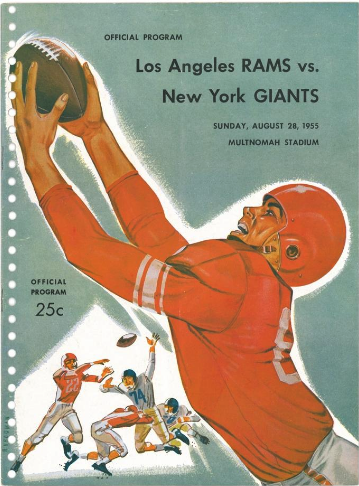Idea for Current NFL Overtime Rule Stretches Back to 1950s
8/28/2018
Two weeks remain before the National Football League’s 99th regular season kicks off in Philadelphia. While some football fans may disregard preseason games, their importance cannot be overstated. The preseason is filled with compelling storylines of players fighting for roster spots, coaches learning which players can be trusted in the heat of competition, and also provides the opportunity for the league to test new rules to make the game safer. These elements are all things to watch for during the preseason.
For example, many football fans regard the 1958 NFL Championship Game as the first overtime game in league history. That memorable showdown between the Baltimore Colts and New York Giants was indeed the first postseason overtime game. However, it was not the first overtime game.
Many years earlier, a clause about sudden death overtime was officially included into the 1941 NFL bylaws with the addition of Section 6 labeled “Sudden Death System” under Article XX titled “Divisional Play-Off-Game.” While never tested prior to the ’58 championship, there was an experiment with sudden death in a preseason game three years before the Colts-Giants clash.
The Giants were set to face the Los Angeles Rams on Aug. 28, 1955 in a game to be played at Multnomah Stadium in Portland, Oregon. The game’s promoter, Harry Glickman, had sought and received permission from the NFL to use sudden death should the game end in a tie at the end of regulation. Glickman’s motivation for having the overtime rule in effect was more for a publicity stunt to sell tickets.

As fate would have it, the rule was put to a test that day. The Giants, led by quarterback Charley Conerly and Hall of Fame halfback Frank Gifford, took an early 10-0 first quarter lead. The Rams’ Tank Younger narrowed the margin on a five-yard run in the second quarter as the half ended with the Giants in front 10-7.
Los Angeles struck twice in third quarter and jumped ahead 17-10. The Giants’ Alex Webster scored on a three-yard TD run to tie the game in the middle of the fourth quarter and the score remained even at 17-17 when the final gun sounded.
Following a bit of confusion, referee Ross Bowen consulted with Rams’ owner Dan Reeves and Wellington Mara, general manager of the Giants. It was agreed that the sudden death period would be played.
“I didn’t think there was a chance in a million it would be used,” Glickman was quoted as saying after the game.
The sudden-death period did not last very long. The Rams won the coin toss and, guided by Hall of Fame quarterback Norm Van Brocklin, constructed an eight-play, 70-yard drive that culminated with a two-yard TD plunge by Younger. The winning tally came just 3:28 into the extended play.
As a side note, another innovation was incorporated during this game. The field yard lines were marked from zero to 100 instead of the traditional goal lines to the 50. Not surprisingly, this trend never caught on.
Despite the victory, Rams coach Sid Gillman wasn’t all that enamored with the overtime rule. A newspaper account the next day shared that the Hall of Fame coach’s opinion of the overtime rule was that it placed too much emphasis on the coin toss. He told a reporter that something needed to be implemented that gave both teams the opportunity to have the ball during sudden death.
More than a half century later, the very same debate continued and resulted in a change to the NFL’s bylaws. The league installed a modified sudden-death overtime system to help determine a winner in a tie game for the 2010 postseason. Two seasons later, the league expanded those rules to cover all NFL games.
That rule now gives both teams the opportunity to possess the ball at least once in overtime unless the team that receives the overtime kickoff scores a touchdown on its first possession.
So remember, just because your favorite players may only play a series or two in the game, there are plenty of reasons to watch the preseason. You might even catch the first or only time something happens in NFL history.
Go back to all blog listings